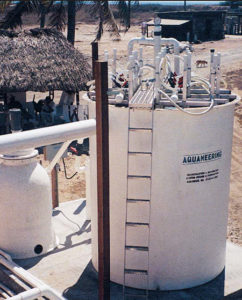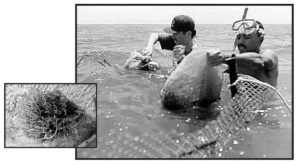
Treatment of shrimp pond effluent using constructed wetlands
This paper reports on the use of a constructed saltwater wetland system to treat effluent from a pilot facility consisting of four 2-ha ponds.
Recirculating systems for commercial scale farming of shrimp have been tried in several areas of Thailand over the past five years.

This paper reports on the use of a constructed saltwater wetland system to treat effluent from a pilot facility consisting of four 2-ha ponds.

Shrimp pond systems equipped with dissolved oxygen, temperature and aerator amp-draw sensors now provide reliable pondside automation to growers.

Bio-Cord is a biofilter media developed for management of drainage into oceans, rivers, lakes and marshes to prevent water pollution through sedimentation.

The design and operation of biofilters is multidisciplinary, involving mechanical engineering, microbial ecology and aquaculture husbandry.

Recirculation systems provide a rearing medium that is qualitatively constant and adjustable, resulting in better survival and growth rates.

Some Louisiana tilapia growers have developed greenhouse recirculating systems that are cost-competitive compared to other grow-out approaches.

Fish farmers often fear their ponds will crash from low dissolved oxygen and result in a major loss from the death of stocked animals.

A major challenge facing shrimp farmers is the development of cost-effective technology for reduction of water use and waste discharge.

Drum filters have been shown to be efficient in tests, although the effect of using different mesh sizes has not been clearly determined.

For oligotrophic (low nutrient levels) systems, where extremely high water quality must be attained, biofilters must be considered.

Because aquaculture is a water-intensive endeavor, conservationists have begun to inquire about the possibility of excessive water use in aquaculture.

Successful seaweed farms in the phycocolloid industry have been linked with the sustainable development of coastal communities.

In an integrated tilapia and duckweed recirculating system, the fish and the water of the ponds provide nutrients upon which the duckweed will thrive.

Shrimp are the most commercially important aquaculture animals that utilize a significant amount of microorganisms in their diet.

Activated suspension ponds are effective at nitrogen control and protein recycling, functioning as a biofilter and as a microbial recycling system.